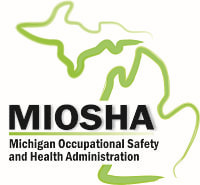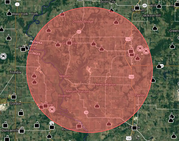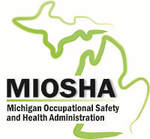even months after an incident occurred that can affect the “days away,” “transfer” and other information on the log. Tier 2 Reports – Has your company started any new processes this past year? Are there any new chemicals stored on site? If so, determine the quantities and how and where the materials are managed on site. Now is a good time to update your chemical inventory so that you are ready and able to prepare your Tier 2 Report. Tier 2 Reports are due March 1, 2021. And, don’t forget, a thorough and accurate chemical inventory supports other programs like Right-to-Know, oil and chemical spill prevention (SPCC and PIPP) and storm water pollution prevention. Air Permit Reports – Depending on your emission units and permit terms and conditions, you may have monthly, quarterly, semi-annual or annual reports to submit. It is a good idea to check in with the staff responsible for collecting data to ensure it is complete and accurate and that the data will be available when needed. Toxic Release Inventory – TRI reports aren’t due until July 1st. And although you still have some time, it is always a good idea to get a jump start on collecting necessary data, which can be time consuming and cumbersome. If you already know that chemical quantities exceed thresholds, start ordering 2020 data or reports from appropriate company departments and vendors now so you have plenty of time to assemble and analyze the data to prepare the TRI report and submit it on time. If you are unsure whether TRI Reporting is required, the first step is to conduct an Applicability Determination to identify whether regulatory thresholds have been exceeded. This activity examines the raw materials, processes and wastes generated by a facility and compares the results with the regulatory thresholds. If thresholds are exceeded, then a TRI report Form A or Form R are required. Online Reporting Access – Just like the fire department wants you to check the batteries in the smoke detectors at home during the New Year, it is also a great time to check your usernames and passwords to make sure they are current and still work so that your online access is not interrupted when you go to enter your data. Some agencies even require you to change your password annually. The new year is also a good time to make sure that everyone at the facility involved in the reporting process still knows their login information and how to use it. Getting these items resolved now will help avoid headaches as you approach reporting deadlines. If you have questions about reporting or applicability of regulations,
give us a call at (231) 288-1076. We are happy to help!  The August 9, 2018 Federal Register provided OSHA’s latest amendments of the Beryllium rule (29 CFR 1910.1024) and delayed certain compliance deadlines. We think its helpful for the compliance deadlines to be outlined in chronological order. So we made a list for you. Below are the compliance dates (bolded) for the OSHA rule. If the MIOSHA dates are the same or different, it is noted. Listed below the compliance dates are the various paragraphs of 1910.1024 that are affected by the bolded compliance dates: March 12, 2018 – same for MIOSHA This is the compliance date for obligations contained in paragraphs (c), (d), (g), (k), and (l) of this standard.
December 12, 2018 – MIOSHA Part 340 is March 12, 2018. The amended rule sets this date as the compliance date for “all other obligations” of this standard such as:
March 11, 2019 – same for MIOSHA For paragraph (i) Hygiene Areas and Practices, the following requirements have been postponed until this new compliance date:
March 10, 2020 – same for MIOSHA For Engineering Controls required by paragraph (f) this is the new compliance date. However, It is believed that the intent here is for companies to comply with the non-engineering control portions of this section such as:
We’ll keep you updated on more OSHA and MIOSHA updates of this and other standards in future issues.  Did you think that once you “complete” your Risk Management Planning (RMP) and Process Safety Management (PSM) programs there is no more work to be done? Often, regulatory requirements are thought of as one and done. You prepare the document and its done, you don’t have to look at it again for five years. Not in this case. These programs require vigilance, especially if the processes at your facility often change. For starters, both PSM and RMP include periodic actions that must be completed regularly. Here’s an abbreviated listing:
So, as you can see with this truncated list of periodic requirements, there is a lot to do after the main part of the program is established. I will say this, it gets a little easier as personnel understand what is expected of them and adopt a PSM/RMP safety culture. One final thought. Remember to document all of your reviews and date all of your changes. The old saying still holds true. If it wasn’t documented and you can’t prove a review took place, it didn’t happen.  The OSHA PSM Standard (29 CFR 1910.119) is a “performance” standard rather than a “prescriptive” standard. In other words, the standard doesn’t tell you exactly what to do, such as when to collect a sample or log temperature. Rather, the PSM Standard requires you to achieve a certain level of performance. Then it is up to you to figure out how to maintain performance at that level. MIOSHA has adopted these regulations in GI Part 91 and OH Part 591. The PSM Standards consist of 14 “Elements.” These “elements” are broad categories of compliance, like “Training” and “Employee Participation", each having its own set of requirements and goals that you set and then meet. “14 elements!,” you sigh and think, “how am I going to get all of this work done when there is only one of me!” Let’s begin to answer with this – start with OSHA’s guide for small businesses entitled, Process Safety Management for Small Businesses. A copy can be found here. In this guide OSHA identifies Process Safety Information (PSI), Process Hazards Analysis (PHA), Training, Mechanical Integrity (MI), and Compliance Audits as the elements most relevant to hazards associated with small businesses. Although all 14 elements will eventually need to be completed, this is a good place to start your PSM Program development. Why do you think OSHA started with these elements? Well, because by doing them you will be successful at making a good product and preventing your employees and neighbors from exposure to a highly hazardous chemical. Process Safety Information (PSI) PSI includes a variety of information about your system, such as design and operating specifications for piping, vessels, valves and gauges. It includes drawings (P&IDs) showing the system layout, process flow and safety systems. This information will help your operators know when the system is operating in the sweet spot and when something is going wrong? The P&IDs will enable you to look up information about your system and see how its pieces and parts fit together and flow. Your maintenance team will be able to order and install the right equipment because they will know what design specifications they need for replacement parts. It is fairly straightforward. Your PSI and all the information about your system needs to be accurate and kept up to date because the rest of your PSM program is built around the PSI information. Process Hazard Analysis Why do you need a PHA? Why can’t I just copy the PHA from the plant down the road that is really similar to mine? Because one size does not fit all. Even though some systems are considered “Off-the-shelf,” your equipment numbering system will likely be different and your system probably won’t have exactly the same configuration for piping, valves and safety equipment. Each system is different, so you cannot just copy another PHA and call it your own. Besides, your team has to go through the exercise. The PHA is a great learning and exploratory opportunity and a great tool for identifying weaknesses, even in the best systems. And, believe me, by the end of the PHA your team will discover weaknesses and things they didn’t know about before the exercise started. Mechanical Integrity Effective preventative maintenance is one of the best ways to keep the highly hazard substance in your PSM regulated system and avoid deadly and costly accidents associated with worn valves, piping and gauges. This includes inspections of system components, exercising valves, ensuring gauges are working correctly and timely replacement of worn components. Training of the maintenance technicians keeps them safe and ensures replacements and repairs are done according to established codes and specifications. Training Training is obvious, I think. Does a front desk receptionist need the same training as a maintenance technician? No. Staff and operations personnel need to be trained to the level of their involvement with the system. Everyone, at a minimum, needs to understand what their responsibilities are and what to do during normal operations and during emergencies. Office personnel need to know the dangers of the chemicals they are working near and what to do during an emergency. Compliance Audits If the suggested elements in the small business guidance document supposedly have something to do with the information about the system, why are compliance audits included in this list? Probably because an audit is a good place to figure out where you are in the whole process of developing a PSM Program. Or if you happen to have a mature program, an audit is a good way to have a fresh set of eyes review the program to identify opportunities for improvement or to check if the documents describe the activities actually implemented at your facility. Remember the old industry adage, Plan Do Check? This is the check part. Operating Procedures Another element I feel is important, but, is not in the OSHA guide as one of the five important elements mentioned earlier, is standard operating procedures (SOPs). This element, when done correctly, helps you make good product or refrigerate efficiently. If your procedures are wrong or ignored, it can result in employee injuries, equipment damage, raw material wastes and allot of wasted process time and money. On top of that, training of operators is critical, so they know how to keep the system in the sweet spot, how to recognize out-of-control conditions and then how to respond in a way that shuts the system down safely or brings it back under control. Oh, and they are a great training tool, too. So, you tell me if operating procedures are important or not. It is a big job, but it doesn’t have to be overwhelming. By now you realize you alone cannot develop and implement a PSM program. It takes a team of operators, mechanics, engineers, their managers and of course, you, the compliance professional to get it all done. SRM’s PSM professionals have been helping clients with their PSM programs for 20 years. We can evaluate your program, prioritize your opportunities for improvement and help you ensure your PSM program is effective and compliant. Just give us a call and we’ll show you how!  Some economists say a little inflation is a good thing. Well, when it comes to regulatory compliance, or in this case non-compliance, it can be a bad thing. In accordance with the Federal Civil Penalties Inflation Adjustment Improvements Act of 2015, the Department of Labor is required to adjust penalties for inflation each year. As a result, OSHA announced that the new penalty amounts, adjusted for inflation, as of Jan. 2, 2018. New penalties for willful and repeat violations are $129,336 per violation. Serious, other-than-serious, and posting requirements are $12,934 per violation. Failure to correct violations are $12,934 for each day the conditions continue. These same penalties will be coming soon to a state program near you. More information can be found on the OSHA web page. MIOSHA announced that it will follow the recently published OSHA memorandum concerning enforcement of the Construction Silica Standard. The OSHA memo emphasizes a few positive and important points for employers:
A few important things to keep in mind:
MIOSHA, announced on September 22nd that it will follow the OSHA Memorandum including the enforcement date. OSHA began enforcing most provisions of the standard for construction on September 23, 2017, and will begin enforcing most provisions of the standard for general industry and maritime on June 23, 2018. MIOSHA regulations for silica in construction can be found in Part 690 Silica in Construction. Silica requirements for general industry can be found in Part 590 Silica in General industry. Link to Memo OSHA has released a Small Entity Compliance Guide for General Industry and Maritime to help small business employers comply with the agency's Final Rule to Protect Workers from Exposure to Respirable Crystalline Silica. The guide describes the steps that employers are required to take to protect employees in general industry and maritime from the hazards associated with silica exposure. These requirements include:
The compliance guide can be downloaded from the OSHA web site. Federal OSHA Enforcement of the final rule in general industry and maritime is scheduled to begin June 23, 2018. by Bill Schneider
MIOSHA announced that beginning September 1, 2015, the state will implement the new federal injury reporting rules for severe injuries that became effective January 1st of this year. All Michigan employers will be required to report any work-related amputation, loss of an eye, or in-patient hospitalization of any employee, within 24 hours of the incident. Twenty-five additional industries have been included in these rules, too. |
|




 RSS Feed
RSS Feed
